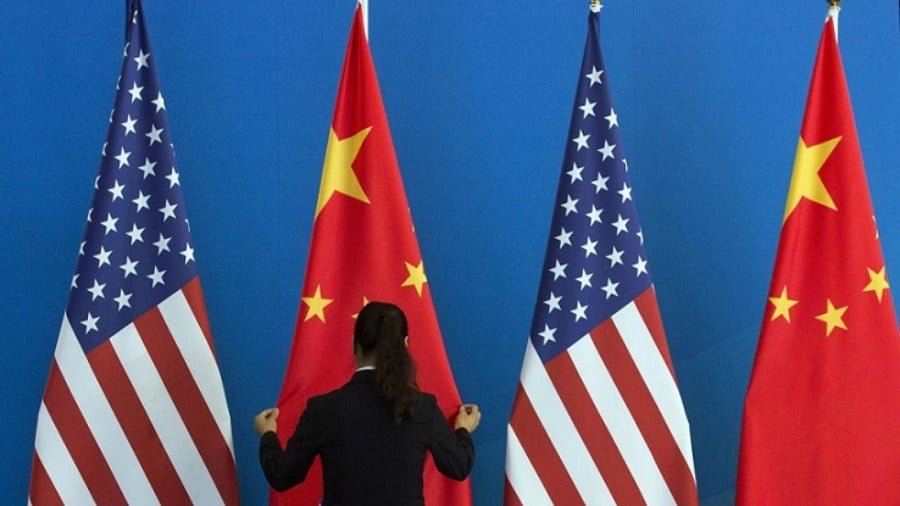The Latest Developments in Relations Between the USA and China
The change in the relationship between the two leading world powers (the USA and China) is a key factor in the situation, not just in the Indo-Pacific, but in the world as a whole.
The answer to the main question – the nature of that relationship in (at least) the first half of the 21st Century – was already more or less clear by the end of the 1990s. Back then, perceptive observers were already predicting that China would be the USA’s main global rival by the end of the 2010s.
The attempts made in the first half of the 2000s by one section of the US establishment to incorporate China into a US-centred world order ended in failure. The “turn towards Asia” in US foreign policy was one result of this failure. The first written record of this sea change was a much-discussed article by Hillary Clinton, published at the end of 2011 in the Foreign Policy journal.
In reality, the first visible sign of this change occurred at the beginning of the 2000s, after US president Bill Clinton’s visit to India. That country was already being seen as a possible counterweight to China.
The rivalry in the global arena between the USA and China has been developing continuously for the last 20 years. At the beginning of his second term in office, Barak Obama initiated G2 meetings between the two countries, in an attempt to put an end to that dangerous trend, but without success.
Fundamentally, despite all the developments in relations between the USA and China over the last few months, nothing has really changed. What is noteworthy, however, is the sheer number of significant events and meetings that have taken place in that short period of time.
The most important of these (a step which, right up to the last minute, the present author was sure would never be taken) was the decision to by the US to impose tariffs totaling 200 billion dollars, representing 40% of imports from China. Another 50 billion dollars should be added to that figure, to represent China’s potential losses from earlier tariffs. In total, China’s exports to the USA are likely to halve.
That is a long way from the proposals to “sort things out before it’s too late” – even without counting the sabre waving and fencing-style challenges. It is an aggressive thrust, resulting in a serious hit. China was forced, naturally, to respond with a counter-thrust, which also hit home. Not as serious a hit, but a hit nevertheless.
It is also worth bearing in mind the extremely aggressive comments made by Vice President Mike Pence in an address to the Hudson Institute on October 4. (. Among other things, the number two US government official accused China of wanting to overthrow the current US President by influencing the electorate in order to ensure the Republicans suffer a defeat in the upcoming elections to Congress.
We have already reported on the way the US has stepped up its policies in relation to a subject China is very sensitive about Taiwan. In comments directed against China, Mike Pence also touched on the Taiwanese question in his speech.
Further evidence that China is being attacked from all sides was provided by an article published by the Bloomberg news agency on the same day, October 4, accusing China of a large-scale hacking attack on a number of major US companies including such household names as Apple and Amazon.
In answer, the Chinese newspaper the Global Times pointed out that both those companies had dismissed the Bloomberg article as “fake news” and that it was clearly timed to coincide with the “trade war” that the US has declared on China.
In general, the problems between the two countries are no longer limited to disputes over trade and the economy. This is evident from another article in the Global Times, entitled “South China Sea can be more risky than trade” . Among other issues, that article touches on the latest confrontation (in this case, almost a literal collision) between Chinese and US ships in the South China Sea, and an extended flight by a US B-52 bomber, which closely followed China’s eastern border. Both incidents were widely reported by international media.
Trade and the economy are also beginning to suffer the negative consequences of the Trump administration’s attempt to counter an “unfair” trade system by launching aggressive sorties against China.
At this juncture it is worth pointing out that the “unfairness” the USA is complaining of relates to its own foreign trade deficit (particularly in relation to China), and not to any deliberate and dishonest actions. That is how capitalist economics works: the main goal, which has not changed in the last 200 years, is to allow a party to make as much profit as possible profit at a minimum cost.
For decades American companies have been, quite openly, outsourcing many of their functions, including manufacturing, to countries with rapidly developing economies and cheaper labour costs. It is hard to see how China is to blame, and why it is being required, at the drop of a hat, to give up the benefit of a policy that, until recently, both nations were entirely satisfied with.
Incidentally, not so long ago Washington took a very similar position in relation to the nuclear disarmament of DPRK: “Look here, guys. You get rid of your nuclear weapons pretty damn quick and then everything will be ok.” That was after 60 years of almost continuous military exercises close to the 38th parallel, and the revelation that General Douglas MacArthur had demanded that the US use its nuclear weapons in the Korean War.
The Americans are an impatient people. A young nation.
But hasty measures can be extremely dangerous when making major changes to (relatively slow) processes in the area of international trade and economic relations that have been developing over many years.
China, certainly, does not deny that there are serious problems in its trading relations with the USA, and has declared that it is willing to discuss all aspects of these relations in order, little by little, to correct any “distortions”. Several rounds of such discussions have already been held at the ministerial level.
And yet they still have not managed to reach an agreement? No, they have not – but that is no reason, in a delicate matter like this, to throw down the gauntlet and draw one’s sword. On July 19 Christine Lagarde, the Managing Director of the International Monetary Fund, issued a warning about the dangerous consequences (for all parties) that might result from this kind of fencing between to major economic powers.
But the voice of reason went unheeded. Which is a big pity. The beginning of October this year saw a fall in both the Chinese and the US stock exchanges, and well as those in Japan and Europe – that is, in all the leading countries in the global economic system. In the US, the financial markets started recovering slightly on October 13, after a week of losses.
On October 11 Christine Lagarde again called for the USA and China to “cool down”, return to the negotiating table, and calmly discuss their differences and also ways in which the developing international trade system should be fixed.
But is looks as if Beijing and Washington, without the need for such warnings,are starting to see the danger of getting caught in an uncontrollable vicious circle of tit-for-tat measures and countermeasures. The effects of that vicious circle, as we have said, are already extending beyond the area of trade and the economy, into other aspects of the two countries’ relationship.
On October 8 during the visit by US Secretary of State Mike Pompeo to Beijing, as part of his trip to four Asian nations, the USA and China exchanged views on the full range of issues that they disagree on.
It is interesting to note that, in a recent editorial, the Global Times was highly optimistic about the ongoing talks between the USA and China. The authors of that editorial believe that China and the USA may be able, not just to reach a compromise, but actually to combine their efforts and create a “third alternative” – a synergy effect of the type described by the management specialist Stephen Covey in his book of that name.
The present author feels that such optimism is still rather premature, based as it is on a very shaky foundation – a ministerial visit from its main geopolitical opponent. One fairly simple issue that is still not entirely clear is whether the two countries’ leaders will be able to have a one-to-one meeting on the sidelines of this November’s G 20 summit in Argentina.
After all, if the two major global “fencers” are to start making even a little progress in their relations, they will first need to sheath their swords.







